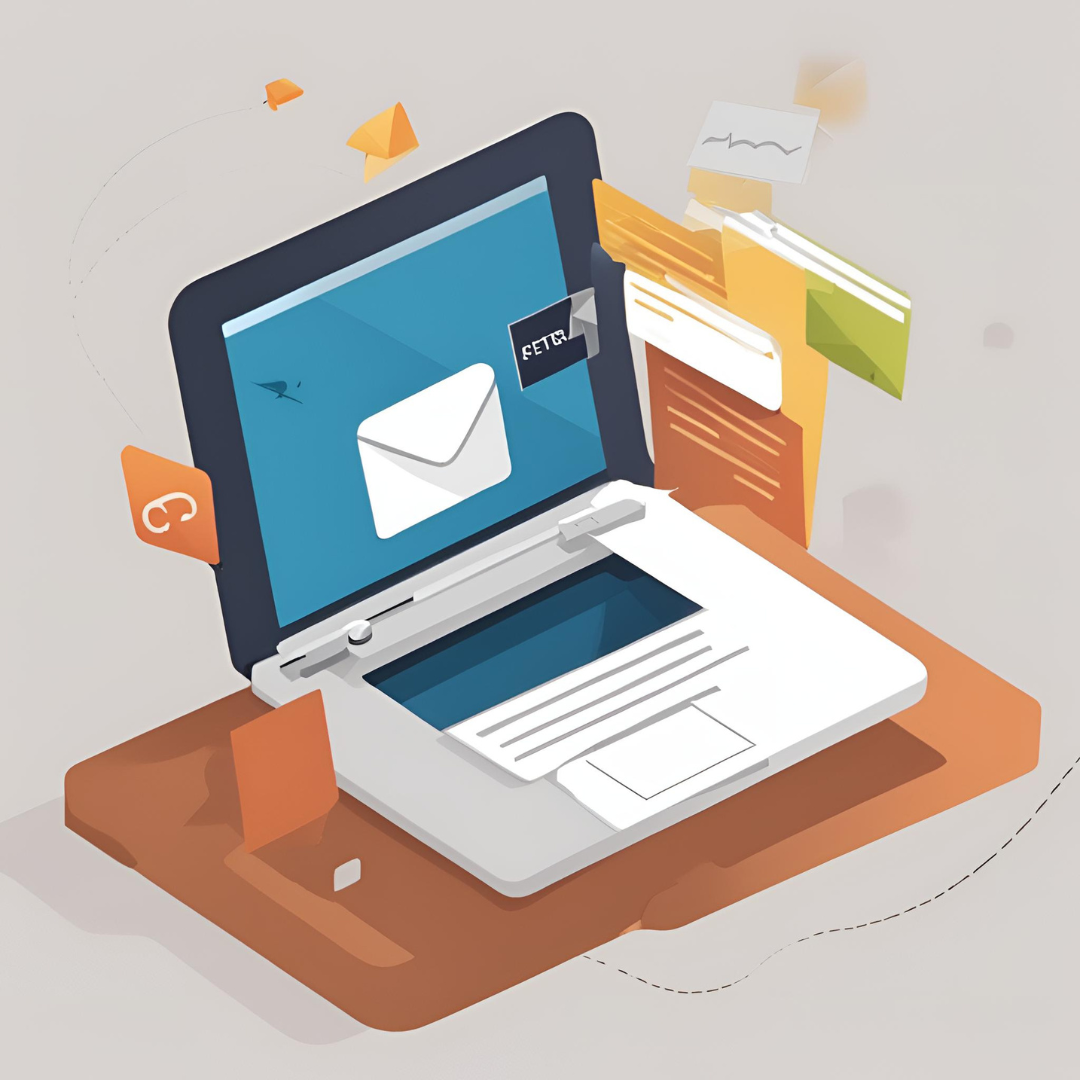One of the best ways to interact with your audience, nurture leads, and increase conversions is still through email marketing. Email is still a very effective tool for keeping and fostering relationships with consumers, even in the face of the increasing popularity of social media and instant messaging applications. Email engagement and email retention are two essential components that firms must prioritize if they want to fully realize the potential of email marketing. This thorough manual examines the significance of both, offers guidance on how to measure them, and presents doable methods for enhancement.
1. Understanding Email Engagement
What is Email Engagement?
The amount of interaction recipients have with your email campaigns is referred to as email engagement. It includes all of the different things that recipients of your emails do in response, such as:
-
Open Rate: The percentage of recipients who open your email.
-
Click-Through Rate (CTR): The percentage of recipients who click on links within your email.
-
Reply Rate: The percentage of recipients who reply to your email.
-
Forward Rate: The percentage of recipients who forward your email to others.
-
Social Shares: The extent to which your email content is shared on social media.
High engagement shows that your emails are successfully eliciting the required behaviors from your readers and that your content is hitting home. Low engagement, on the other hand, can indicate that your emails are not getting to the correct people or that your content needs to be improved.
Why is Email Engagement Important?
Engagement is crucial for several reasons:
-
Improved Deliverability: Engagement metrics are used by email service providers (ESPs) to decide whether to put your emails in the trash or inbox. You have a better chance of getting in the inbox if your engagement rate is high.
-
Enhanced Customer Relationships: Active subscribers are more likely to become connected to your brand, which will boost repeat business and loyalty.
-
Increased Conversions: Calls to action (CTAs) are more likely to be acted upon by engaged recipients, increasing conversion rates and income.
-
Valuable Insights: By understanding what material appeals to your audience, you can improve your approach and provide greater value by analyzing engagement data.
Key Metrics to Measure Email Engagement
To effectively measure email engagement, track the following key performance indicators (KPIs):
-
Open Rate: The percentage of receivers who open your email is displayed by this indicator. It assists in determining how well your subject lines and send times work.
-
Click-Through Rate (CTR): The percentage of receivers who click on a link in your email is measured by the CTR. This demonstrates how effective your CTAs and content are.
-
Bounce Rate: The percentage of emails that are not delivered is called the bounce rate. You may need to address the quality of your email list if your bounce rate is high.
-
Unsubscribe Rate: This metric measures the proportion of subscribers who unsubscribe from your email list following a campaign. A high unsubscribe rate may indicate issues with the frequency of emails or the relevancy of the content.
-
Conversion Rate: The percentage of recipients who finish a targeted action—like making a purchase or registering for a webinar—is measured by the conversion rate.
-
Forwarding Rate: How frequently recipients share your email content with others is indicated by this indicator. A high forwarding rate suggests that the stuff you have is worthwhile to share.
2. Strategies to Improve Email Engagement
Improving email engagement entails improving different aspects of your email campaigns and producing content that speaks to your audience. The following are some successful methods to increase engagement:
2.1 Personalization
Customization stands out as one of the most effective methods for raising email open rates. Making your emails more relevant and interesting requires customizing your content to each recipient's tastes and behaviors:
-
Use Recipient’s Name: To establish a personal touch, use the recipient's name in the greeting and subject line.
-
Segment Your List: To send more customized content, segment your email list according to variables like interaction levels, purchase history, and demographics.
-
Behavior-Based Recommendations: Make content or product recommendations based on prior interactions, including browsing history or past purchases.
2.2 Craft Compelling Subject Lines
Because it is the first thing recipients see, the subject line greatly influences the likelihood that they will open your email. In order to raise open rates:
-
Keep It Short and Sweet: To make sure your subject lines are completely viewable on all devices, try to keep them under 50 characters.
-
Create Curiosity: To grab users' attention and persuade them to open your email, use captivating wording.
-
Include Personalization: To make the subject line stand out, add recipient names or other personalized components.
-
Highlight Value: To grab attention, clearly state the offer or benefit in the subject line (e.g., "Exclusive 20% Off Just for You!").
2.3 Optimize Send Times
Your email's performance might be greatly affected by the time it is sent. To determine the ideal times to send emails to your audience, analyze data from prior campaigns. Emails sent throughout the week generally perform better in the morning or early afternoon, but you should always test and make adjustments based on the behavior of your target audience.
2.4 A/B Testing
You can test several aspects of your emails using A/B testing to see which version works better:
-
Subject Lines: Test different subject lines to see which generates higher open rates.
-
Email Designs: Experiment with various layouts, colors, and images to find the most visually appealing design.
-
CTAs: Test different CTAs in terms of wording, placement, and design to determine which drives more clicks.
A/B testing helps you make data-driven decisions and continuously refine your email campaigns.
2.5 Improve Email Design and User Experience
An attractive email improves the experience for the recipient and promotes interaction. Think about the following design components:
-
Responsive Design: Ensure your emails are optimized for both desktop and mobile devices.
-
Clear Layout: Use a clean and organized layout with distinct sections and headings.
-
Strong CTAs: Make your calls to action stand out with clear and actionable language.
-
Engaging Visuals: Incorporate high-quality images, GIFs, or videos to make your emails more engaging.
2.6 Offer Exclusive Content or Promotions
If subscribers believe they are getting something exceptional, they are more likely to interact. Provide promotions or special content to encourage participation.
-
Discounts and Coupons: Offer time-limited sales or exclusive vouchers to promote prompt action.
-
Early Access: Provide early access to new services, goods, or content for subscribers.
-
Special Content: Distribute unique content that isn't found anywhere else, such insider knowledge, behind-the-scenes glimpses, or special reports.
2.7 Optimize for Mobile
Making your emails mobile-friendly is essential because more and more people are checking their emails on their phones:
-
Responsive Design: Ensure your emails adapt to different screen sizes.
-
Readable Fonts: Use large, legible fonts to improve readability on smaller screens.
-
Clickable Buttons: Make sure buttons and links are easily clickable on touchscreens.
Conclusion
Long-term success in email marketing requires a mastery of email engagement and retention. Strong retention rates guarantee that subscribers stay devoted to your brand and keep interacting with it, while high engagement rates show that your content is connecting with your audience.
You can increase engagement and create enduring relationships with your subscribers by putting tactics like personalization, send time optimization, A/B testing, and maintaining consistent value into practice. You may also maintain the health and growth of your email list by concentrating on retention through the use of preference centers, re-engagement efforts, and clear expectations.





Leave a Reply